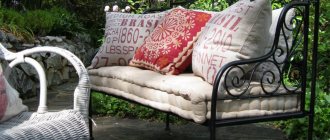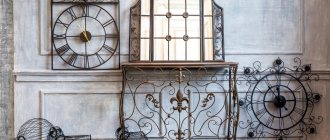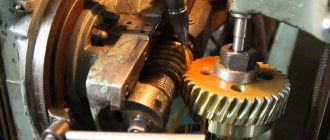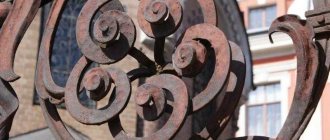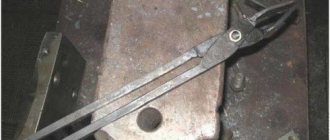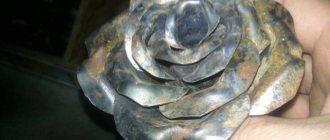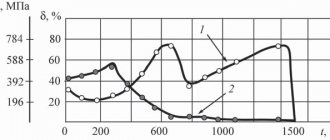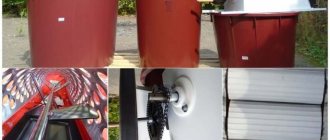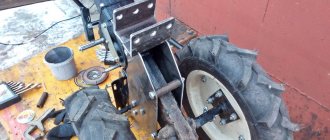Forged vines of various diameters. Photo Center-Kovka
For decoration of metal products and structures, forged elements of various types, shapes, and sizes are used. Additional details allow you to decorate objects that have a standard design or are characterized by simplicity of shapes and lines.
Forged vine is perhaps the most popular decorative element for many products: railings, fences, railings, trellises, etc. Floral detailing transforms and enlivens metal objects, making them look rich and realistic.
The vine attracts customers with its “naturalness”; its smooth curves resemble a living plant. The element is made from rods of different diameters , therefore the thickness of the finished element may vary. This allows you to use the vine to decorate both small objects with the finest lines and large-scale structures with solid configurations.
What products are decorated with metal vines
The versatility of forged vines and the variety of sizes ensures a harmonious design for many products. Natural elements perfectly complement both stylistic objects, such as flower stands, and neutral-shaped structures: fences, balcony and staircase railings.
In addition, the vine is suitable for decoration:
- gates and gates;
- awnings and canopies;
- railings and fences (here you can see how railings are made with vines);
- furniture for the garden: benches, benches and for the interior: tables, chairs;
Wrought iron bench with grapevine. Photo KovArt
- doors and window bars.
Doors with vines. Photo Alois
There are many options. Other organic combinations that capture the imagination and attract attention are presented in the “Photos of forging with vines” section.
Metal processing. "Vine"? Without a stamp and a hammer!
Good day to all DIYers! I am glad to present a simple idea from Andrey Vinnichuk, which will help you expand your metal processing capabilities.
Surely you will have new design solutions that can be implemented even in a small garage forge. The author will demonstrate another method of applying texture to a rod.
The method is very simple. To do this, you do not need to make a special tool for applying notches.
Required tools and materials:
Horn. Bulgarian. Metal discs. Cleaning metal brush for grinder. An ordinary wire brush. Pincers and similar devices. Of course, gloves for working with hot metal. Vise. Steel rods of different diameters (10 mm or more). Welding machine and accessories.
When making vines and grape bark, the author will use round rods with a diameter of 14 mm.
First of all, using a grinder, the author makes longitudinal indentations.
It is necessary to make them continuous along the entire length of the rod.
Although it depends more on your imagination and the result you get.
Weld a piece of square rod to each side of the workpiece.
This is done for the convenience of creating rotational force.
Actually the beginning of the process. The forge heats a small area of the workpiece.
Clamps the lower welded rod in a vice.
And it twists.
After one section has been twisted, the next section is heated again.
And he spins it in the other direction.
Remove scale again with a brush.
Again, the next section heats up.
And again it spins in the opposite direction.
Clears it again.
If you have heated an area that you do not need to twist -
just cool it in water.
To the mark to which you need to twist.
Everything has cooled down and we can now do the twisting. By the way, with the help of such cooling you can also change the angle of the texture. For the reason that the transition from cold to hot is sharper.
After processing with a grinder brush, the textured rod is ready.
Of course, the use of this type of texture notching will be difficult when using a large number of linear meters.
But for small products, or in small quantities, this pattern formation technology is quite suitable. The patterns look very natural and beautiful.
Your work will look unusual and stand out from the products of other artists. The author will use this rod in the manufacture of a fireplace set. Small of course.
Thanks to Andrey Vinnichuk for his work! Link to the original video - below the text is the “source” button
Source
Become the author of the site, publish your own articles, descriptions of homemade products and pay for the text. Read more here.
Entwining (braiding) iron vines around fencing, railings and fences
Forged vines most often decorate fences, balconies and staircases, railings, as well as low structures for landscape design. Plant elements can be placed on the product in various ways.
The most popular decoration technique is the braiding of vertical, horizontal or abstractly located rods, as well as pillars of buildings.
If you have certain skills, wrapping can be done at home . To do this, you need to purchase or make yourself (more on this later) a grapevine. The place where the element will be bent must be heated; an oxygen burner . The metal will become plastic, as a result of which the performer can easily give it the required shape. Curling is conveniently done using blacksmith pliers.
Important! When exposing the grapevine to high temperatures, it is necessary to prevent heating of the product itself. Otherwise, damage and deformation of the metal may occur. In addition, you should not overload the structure with decorative elements. This not only looks pretentious and inappropriate, but can also lead to the collapse of the structure.
With the help of forged vines, supports of other structures are decorated: lamp posts, gazebos, arches, pergolas, shelves, gratings.
DIY forging of grapevines
Forged vines of various diameters. Photo Center-Kovka
For decoration of metal products and structures, forged elements of various types, shapes, and sizes are used. Additional details allow you to decorate objects that have a standard design or are characterized by simplicity of shapes and lines.
Forged vine is perhaps the most popular decorative element for many products: railings, fences, railings, trellises, etc. Floral detailing transforms and enlivens metal objects, making them look rich and realistic.
The vine attracts customers with its “naturalness”; its smooth curves resemble a living plant. The element is made from rods of different diameters , therefore the thickness of the finished element may vary. This allows you to use the vine to decorate both small objects with the finest lines and large-scale structures with solid configurations.
Hot and cold forging
Forged elements of various types are most often produced using the cold forging method, through stamping. This technology involves the use of special equipment, which ensures rapid production and low labor costs. For production, a hydraulic hammer and plant-shaped dies are used. The result of the work is forged elements of a template type, but at a low price.
Reference. Site visitors have the opportunity to purchase factory-produced parts from one of the enterprises that are presented in the “Where to buy forged elements” section.
Hot forging is a hand-crafted metal technology. The method allows you to create “living” elements that are unique in design, real works of art. Their design is developed taking into account the specifics of a particular space.
This option is suitable for special design solutions. To manufacture parts in this way, the contractor requires extensive knowledge and skills, as well as experience. The painstaking and intense work of the craftsman and the uniqueness of each detail determine the high cost.
Grape
Floral ornaments are actively used to decorate metal products. A classic design option is forged grapes. This solution is suitable for almost all objects and structures, regardless of their purpose, location, shape and dimensions. The advantages of forged grapes, as well as the most common combinations, are presented below.
What products are the patterns used to decorate?
Forged bunches of grapes are often used as decoration. The following are products that are interestingly complemented with similar ornaments.
Arches and pergolas
Arches and pergolas are structures used for zoning the landscape, designing vertically oriented flower beds, and for implementing the growth order of climbing plants , most often grapes. Forged bunches are an organic addition to live berries and leaves.
Forged arch with a vine, leaves and shoots, bunches of grapes. Photo by PE Kolesnik
The skill of blacksmiths allows them to produce elements that are visually indistinguishable from natural fruits. Such arches and pergolas look great and serve as a central decoration for the design of the site.
